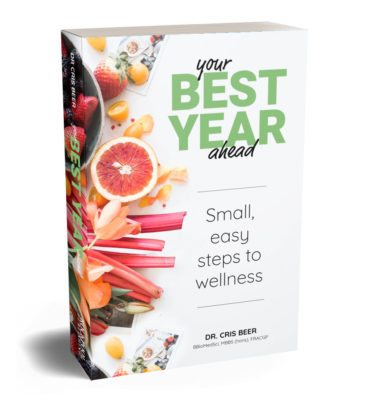When it comes to fruit-and-vegetable intake ideally, we should aim to eat around two serves of fruit and at least five serves of vegetables per day. Many people eat adequate amounts of fruit but not enough vegetables. Some suggestions for increasing vegetable intake would be to eat a large salad for lunch every day, have a stirfry for dinner, or even hide vegetables in casseroles, bolognaise, lasagnes etc. I even have a patient who includes vegetables like spinach, kale and carrot in homemade muffins and adds cocoa powder to disguise the taste.
Most of us realise we need to consume more fruit and vegetables. What we may not understand is that we also need to eat an assortment of different coloured vegetables and fruits daily. Different coloured vegetables and fruit have different nutrients, so by having more variety in our diet is essential for us to get all that our body needs from these foods. Simply eating the same piece of fruit each day and just lettuce on our sandwich does not cut it. Ideally we need to aim to eat a rainbow a day of coloured vegetables and fruit. That is, we need to consume all seven colours of the vegetable and fruit rainbow every day to receive the protection we need from chronic diseases.
Eating the 7 Colours of a Rainbow a Day Keeps the Doctor Away
Some examples of the orange group include:
• Carrots
• Sweet potatoes
• Apricots
• Mangoes
• Squash
• Sweet corn
• Cantaloupe
• Papayas
• Pumpkin
These are some examples of the red group:
• Red apples
• Red capsicum (peppers)
• Beets
• Pomegranates
• Red cabbage
• Red potatoes
• Cherries
• Radishes
• Cranberries
• Raspberries
• Pink grapefruit
• Rhubarb
• Red grapes
• Strawberries
• Tomatoes
• Watermelon
These are some examples of the yellow/orange group include:
• Oranges
• Yellow grapefruit
• Lemons
• Tangerines/mandarins
• Limes
These are some examples of the red/purple group:
• Blackberries
• Purple grapes
• Blueberries
• Raisins
• Eggplant
• Prunes
• Figs
• Red wine
• Raspberries
• Red cabbage
• Plums
Some examples of the green group include:
• Green apples
• Honeydew melon
• Green grapes
• Artichokes
• Kiwi
• Green cabbage
• Asparagus
• Lettuce
• Spinach
• Avocados
• Limes
• Green pepper
• Green beans
• Green onions
• Cucumbers
• Broccoli
• Peas
• Zucchini
• Brussels sprouts
Examples of green vegetables include:
• Broccoli
• Brussels sprouts
• Cabbage
• Cauliflower
Some examples of the white group include:
• Bananas
• Onions
• Cauliflower
• Parsnips
• Garlic
• Potatoes
• Ginger
• Turnips
• Mushrooms
Different coloured fruits and vegetables contain different phytonutrients, which are powerful antioxidants that help protect us against cancer, heart disease, strokes, diabetes and other chronic diseases. By eating a range of these rainbow vegetable and fruits each day you can benefit from the necessary micronutrients.
#healthyhabits #healthyliver
Dr Cris
Holistic Medical Doctor, Author ‘Healthy Habits, 52 Ways to Better Health‘ and Healthy Liver



